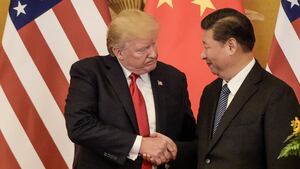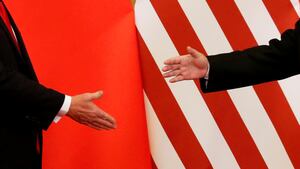HONG KONG—There are examples of Chinese companies developing rare, amazing technologies that we might call stellar, and with reason. Take the Long March 6 rocket as an example. It was developed by a state-owned enterprise for China’s space program, and has been used in two missions since 2015. But it will see much more action in the coming months, as a Buenos Aires-based company will launch 90 satellites into orbit using the Chinese rocket.
Tech firms in China—whether state-owned or privately operated—are good at wooing foreign investors and clients, and the Chinese Communist Party now wants a bigger cut.
Earlier this month, officials announced rules for some changes in the Shanghai Stock Exchange. Following a plan put forward by President Xi Jinping two months ago, Shanghai will have a tech board that allows early-stage startups to file for initial public offerings before they are profitable, reducing some of the power of regulators that oversee the listing process.
According to Reuters, the startups that will benefit from this change develop new equipment and methods in high-tech manufacturing, new energy, biotech, big data, and cloud computing—in other words, key industries that are instrumental to the CCP’s “Made in China 2025” plan. Under the new rules, companies operating in certain sectors, like network information security, will not be allowed to raise funds from entities outside of China.
Beijing sees a problem in the globalized outlook held by the country’s tech firms, despite Xi’s massaged message branding himself as a paragon of globalization and defender of open markets.
Alibaba, one of the 10 most valuable companies in the world, chose to go public in New York. Tencent, which operates the social media super-app WeChat, is listed in Hong Kong.
There are two immediate consequences of this phenomenon that have long bothered the CCP: the first is that as these Chinese companies grow, a portion of their profits go to investors who have little to do with China; then, if Chinese investors want to buy these stocks, they need to move their money overseas, contributing to capital flight. By giving domestic tech firms an incentive to build up at home, Beijing is hoping to reverse both of those conditions.
The move is similar to Trump’s call for, say, Apple to build iPhones and MacBooks within American borders, but it is written into law to target companies that will reshape China’s tech scene and general standard of living in coming years.
Already, some of those changes are visible on the streets of major Chinese cities. Every five weeks, 9,500 new electric buses—about the same number as London’s entire fleet of public buses—are put on the road in China, according to a Bloomberg New Energy Finance report published in 2018, and 99 out of every 100 electric buses currently in use worldwide are servicing Chinese passengers. Cashless payments facilitated by smartphones in retail outlets and restaurants are the norm, with some vendors refusing to take actual currency during transactions. Lights-out manufacturing, where human workers aren’t needed on the production line, is increasingly common.
Bigger, more aspirational projects are lifting off too. In early January, China landed a spacecraft on the dark side of the moon, and then sprouted plants there (however briefly)—marking two firsts in the history of space exploration.
Conforming to the occasional saber-rattling coming out of Beijing, the head of China’s lunar program has likened space exploration to China’s occupation of the South China Sea.
The chief goal of “Made in China 2025” is to remove China’s reliance on foreign technological advances—whether stolen or licensed—and exponentially upgrade the nation’s manufacturing and research capabilities. The tech board that will go online in Shanghai’s stock exchange will, in theory, sever Chinese tech companies’ dependence on foreign capital, too. At least, that is Beijing’s objective.
Much ink and many pixels have been spent to narrate the Trump administration’s whiplash treatment of ZTE, and then the criminal charges filed against Huawei. As these cases unfold, the CCP is making a play to surpass America in technological dominance—in artificial intelligence, 6G communications, algorithms to sort through gargantuan data sets, and quantum-encrypted communications.
The government has adopted some of these technologies already. With 200 million surveillance cameras blanketing the state, many feeding a steady stream of data to facial recognition software, it’s becoming easier for the state to track wanted individuals, or automatically deduct penalty fees from the WeChat wallets of jaywalkers or of drivers breaking traffic laws.
This edges into the realm of high-tech dystopia, where the state can know where you are, who you’re with, and what you’re buying at all times. It’s so efficient that the New York City Police Department is also using it to monitor citizens in some Big Apple housing projects.
Being able to utilize and to some extent monopolize these technologies is much more important to Xi and the CCP than the existing companies’ sales to American clients, even with potential benefits reaped via electronic espionage. The objective, after all, is global supremacy, and China’s leaders are betting that new ways to reach investors in China will keep the country’s brightest scientific minds within their grasp.









